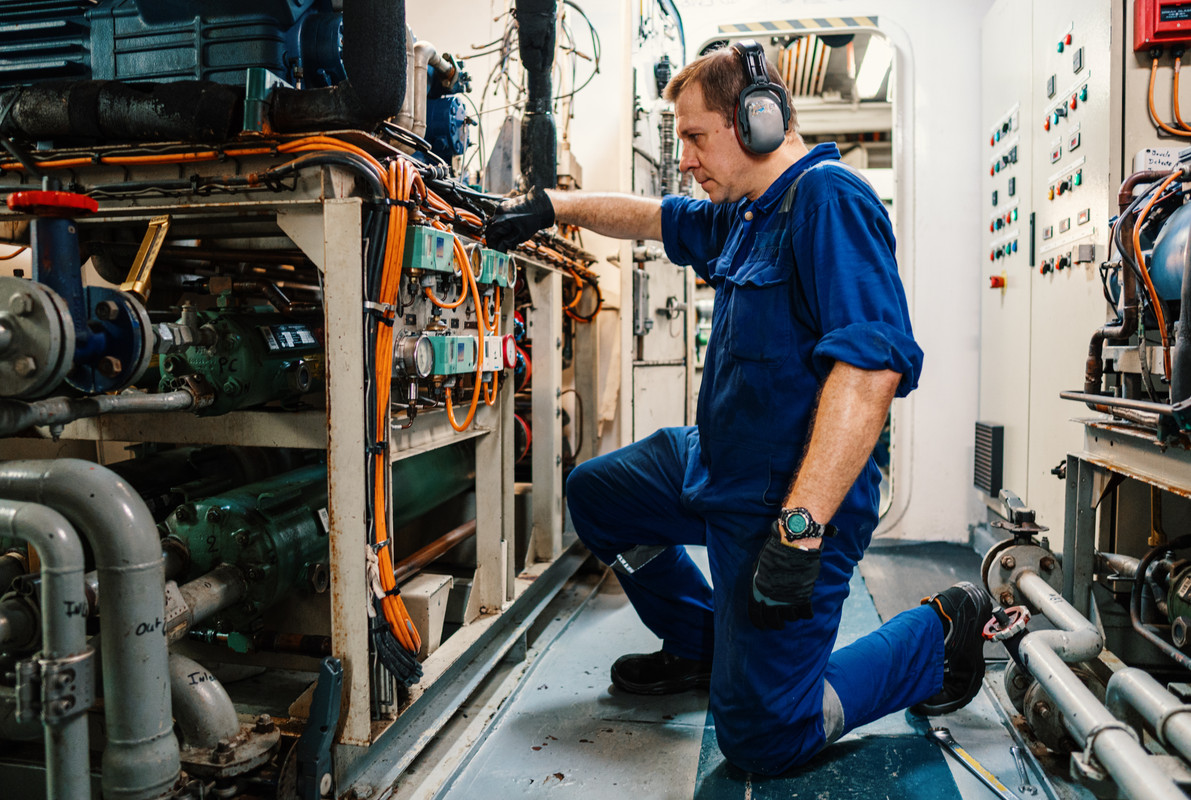Marine electrician
by siteadmin

Marine electricians perform a variety of tasks related to electrical power distribution systems. The training for this career requires a High School Diploma or the equivalent and the ability to pass the ASVAB Electronics part. This career requires the ability to solve problems and work under pressure. Additionally, it requires time management skills and the ability to delegate tasks to others.
Marine electricians work on boats and ships and often have specialized knowledge in radio systems, inverters, and power systems. They may also work on GPS and radar equipment. The field of marine electricity is a specialized one, and it can be challenging to find qualified professionals. Fortunately, there are several options within the greater area.
A Marine electrician is responsible for ensuring the safe and efficient operation of a ship's electronics. They test electrical components, install wiring, and perform repairs. They also upgrade or replace outdated equipment. In addition, they may work on light fixtures, navigation systems, and other electrical systems. The job requires a high level of physical fitness, and they often work in confined spaces.
A career as a Ship's Electrician requires specific skills and a certain personality. These traits are almost as important as physical skills. Other ship-based positions may require skills as well as personality traits. Entry-level roles may include Messman, Wiper, and Oiler. Other positions may involve working in a ship's yard or port. Often, marine electricians assist ship carpenters with repairs and maintenance while a ship is in a dry dock.
Marine electricians may find employment with the company where they completed their apprenticeship. To maximize your opportunities for success, it is crucial to keep your resume and cover letter up to date. Make sure you write a different cover letter for each position you apply for. In addition to completing an apprenticeship, marine electricians need to know how to work safely on a ship. During an apprenticeship, they learn to troubleshoot and repair electrical systems and equipment on ships. They must also be familiar with worksite safety.
Whether you live in a multi-family unit or a small apartment, location is crucial. The NEC requires that there is sufficient space for installing an electrical panel. In the case of a multi-family unit, the electrical panel should be located in a central location so that it is easily accessible. It should not be located in an area that is flammable or too small to allow adequate clearance.
The electrical panel's location is determined by the utility company, but you can request a specific location. It must be installed near the utility line connection. Additionally, you must meet clearance and height requirements around your meter socket. The height of the socket must not exceed six and a half feet, and there should be at least twelve inches of clearance on either side of the meter.
The best location for an electrical panel is an attached garage. This provides a clear workspace requirement but is also hidden from view. If you don't have a garage, an apartment or storage room will work well. Basements are also a great location, as they are out of the way and can easily meet space requirements. The panel should also have emergency lighting in case of a power outage. In addition, if you have an attached garage, the panel should be placed in the area around the garage door, allowing for sufficient workspace.
Depending on your needs, you can choose between interior and exterior mounted electrical panels. Exterior-mounted panels are typically difficult to access during heavy snowstorms, but the upside is that you can call an electrician to fix any problems without having to enter the home. However, an interior-mounted electrical panel should not be placed in a bathroom.
Regardless of where you choose to place the panel, it is important to keep the area free from flammable materials and provide access to the panel. Make sure the area has sufficient space for the electrical panel to open to 90 degrees. You should also make sure the space is accessible to an average adult. Ideally, the height of the highest breaker should not be more than two meters, or six feet and seven inches. These requirements are applicable to residential areas, although there are exceptions for industrial applications.
Categories: Electrician
Tags: electrical safety inspections, wiring upgrades, smoke detectors, electric services, electrician
Marine electricians perform a variety of tasks related to electrical power distribution systems. The training for this career requires a High School Diploma or the equivalent and the ability to pass the ASVAB Electronics part. This career requires the ability to solve problems and work under pressure. Additionally, it requires time management skills and the…
Recent Posts
- Roofing Company Savannah Sheds Light on the Lifespan of Roofs: How Long Should a Roof Last?
- Choosing the Best Gutters for Your Jacksonville FL Home
- Choosing the Best Gutters for Your Chicago Home
- Exploring the Drawbacks of Duct Cleaning: Insights from Air Vent Cleaning Charlotte
- Sons of Monaco Painting Unveils the Ultimate Solution: Roll vs. Spray for Exterior Paint
